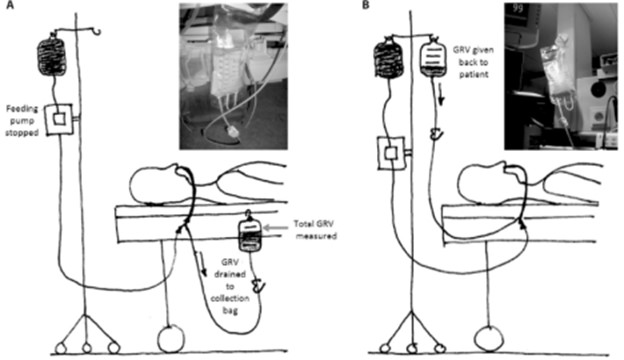A nurse is preparing to administer dextrose 5% in water (DSW) 1,200 ml. IV to infuse over 24 hr. The drop factor of the manual IV tubing is 15 gtt/mL. The nurse should set the manual IV infusion to deliver how many gtt/min? (Round to the nearest whole number. Use a leading zero if it applies. Do not use a trailing zero.)
The Correct Answer is ["13"]
To calculate the infusion rate in drops per minute (gtt/min), we can use the following formula: Infusion rate (gtt/min) = (Volume to be infused (ml) * Drop factor) / Time (min) Given:
Volume to be infused: 1,200 ml
Drop factor: 15 gtt/ml
Time: 24 hr
First, we need to convert the time from hours to minutes:
24 hr * 60 min/hr = 1,440 min
Now, we can calculate the infusion rate:
Infusion rate (gtt/min) = (1,200 ml * 15 gtt/ml) / 1,440 min
Simplifying the equation:
Infusion rate (gtt/min) = 18,000 gtt / 1,440 min
Dividing both sides:
Infusion rate (gtt/min) ≈ 12.5 gtt/min
Rounding the answer to the nearest whole number, the nurse should set the manual IV infusion to deliver approximately 13 gtt/min.
Nursing Test Bank
Naxlex Comprehensive Predictor Exams
Related Questions
Correct Answer is D
Explanation
The nurse should measure the gastric residual before administering a feeding to identify delayed gastric emptying. Gastric residual refers to the volume of formula or contents remaining in the stomach from the previous feeding. Measuring gastric residual helps assess how well the client's stomach is emptying and can indicate if there is delayed gastric emptying.
By measuring gastric residual, the nurse can:
● Determine if the stomach has adequately emptied from the previous feeding. ● Assess the client's tolerance to enteral feedings.
● Detect signs of delayed gastric emptying, which can be indicative of gastrointestinal motility issues or other complications.
● Adjust the feeding rate or make other modifications to the enteral feeding plan based on the amount of residual volume.

Confirming the placement of the NG tube is typically done using other methods, such as an X-ray, pH testing, or auscultation of air insufflation. Gastric residual measurement primarily serves the purpose of assessing gastric emptying, rather than confirming tube placement.
While electrolyte imbalances can be monitored in the overall care of a client receiving enteral feedings, measuring gastric residual specifically focuses on assessing gastric emptying and feeding tolerance, rather than determining the client's electrolyte balance.
Removing gastric acid that might cause dyspepsia is not the primary purpose of measuring gastric residual. Gastric residual measurement aims to evaluate the volume of the previous feeding and assess gastric emptying, rather than focusing on dyspepsia specifically.
Correct Answer is ["25"]
Explanation
To calculate the infusion rate in drops per minute (gtt/min), we can use the following formula: Infusion rate (gtt/min) = (Volume to be infused (ml) * Drop factor) / Time (min) Given:
Volume to be infused: 100 ml
Drop factor: 60 gtt/ml
Time: 4 hr
First, we need to convert the time from hours to minutes:
4 hr * 60 min/hr = 240 min
Now, we can calculate the infusion rate:
Infusion rate (gtt/min) = (100 ml * 60 gtt/ml) / 240 min
Simplifying the equation:
Infusion rate (gtt/min) = 6000 gtt / 240 min
Dividing both sides:
Infusion rate (gtt/min) ≈ 25 gtt/min
Whether you are a student looking to ace your exams or a practicing nurse seeking to enhance your expertise , our nursing education contents will empower you with the confidence and competence to make a difference in the lives of patients and become a respected leader in the healthcare field.
Visit Naxlex, invest in your future and unlock endless possibilities with our unparalleled nursing education contents today
Report Wrong Answer on the Current Question
Do you disagree with the answer? If yes, what is your expected answer? Explain.
Kindly be descriptive with the issue you are facing.
